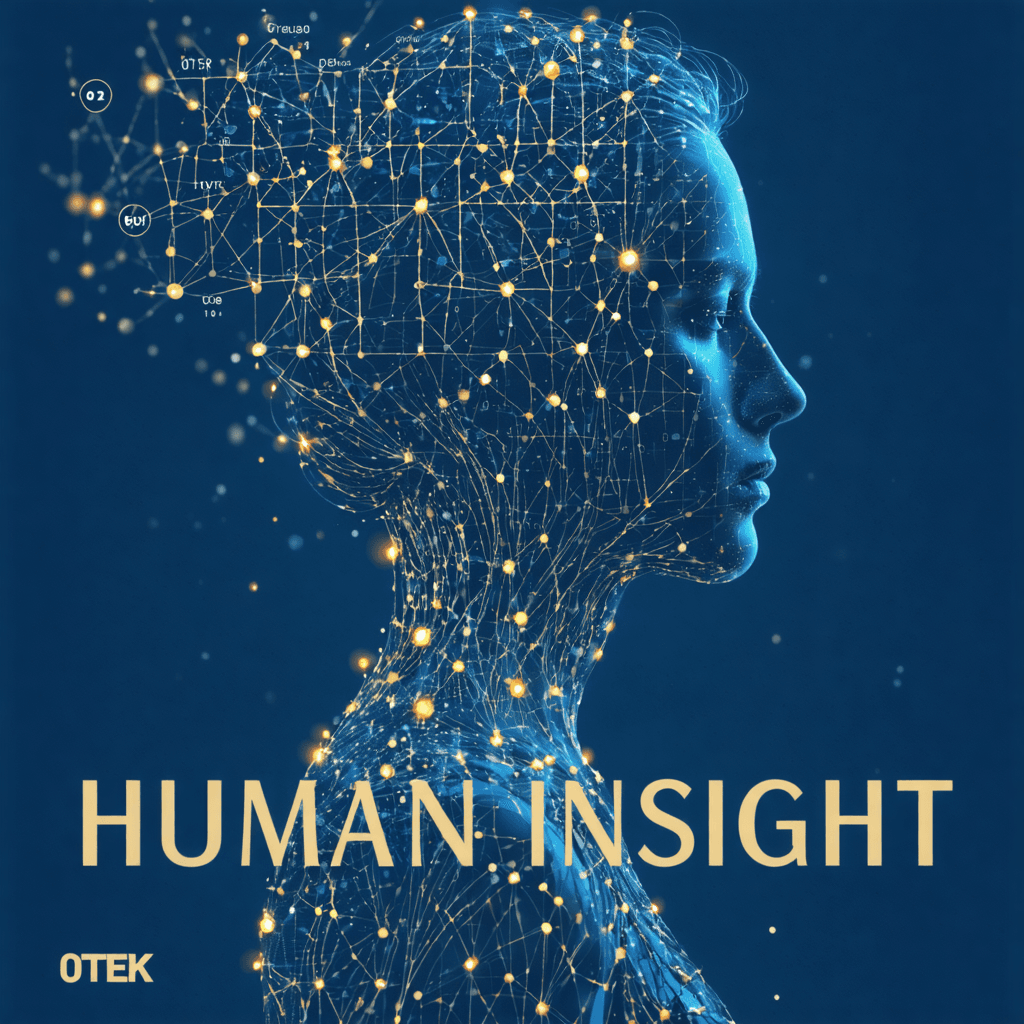Beyond Numbers: How Human Insight Unlocks the Causation Puzzle in AI Models
In an era dominated by artificial intelligence and machine learning, the distinction between correlation and causation has never been more critical. While AI models excel at identifying patterns and correlations in vast datasets, understanding true causal relationships remains a uniquely human endeavor that requires intuition, domain expertise, and contextual understanding.
The Correlation-Causation Conundrum
Machine learning models are fundamentally pattern recognition engines. They can identify that variable A frequently occurs alongside variable B, but they cannot inherently determine if A causes B, B causes A, or if both are influenced by an unseen variable C. This limitation becomes particularly important as AI systems increasingly influence decision-making in healthcare, finance, and public policy.
Why Correlation Isn't Enough
Consider the classic example of ice cream sales and drowning incidents. A machine learning model might identify a strong correlation between increased ice cream consumption and higher drowning rates. Without human insight, the model might suggest reducing ice cream sales to prevent drownings – a conclusion that overlooks the obvious causal factor: warm weather leads to both increased swimming activities and ice cream consumption.
The Human Element in Causal Analysis
Domain Expertise Matters
Human experts bring invaluable context to data interpretation:
- Background Knowledge: Understanding industry-specific factors that influence outcomes
- Common Sense Reasoning: Filtering out spurious correlations
- Ethical Considerations: Identifying potential biases and societal implications
The Power of Asking "Why?"
Humans excel at formulating hypotheses and designing experiments to test causal relationships. This scientific method approach, combined with AI's pattern recognition capabilities, creates a powerful framework for understanding complex systems.
Practical Applications
Healthcare
In medical diagnosis, AI models can identify patterns in symptoms and test results, but healthcare professionals provide crucial insights into:
- Patient history and lifestyle factors
- Environmental influences
- Social determinants of health
- Treatment adherence likelihood
Financial Markets
While AI excels at detecting market trends, human analysts are essential for understanding:
- Geopolitical impacts
- Regulatory changes
- Market sentiment
- Long-term economic cycles
Bridging the Gap: Integrating Human Insight with AI
Best Practices for Causal Analysis
Start with Theory
- Develop hypotheses based on domain knowledge
- Consider potential confounding variables
- Document assumptions and limitations
Leverage AI Strengths
- Use machine learning for initial pattern discovery
- Employ causal inference algorithms
- Validate findings across multiple datasets
Apply Human Oversight
- Question unexpected correlations
- Consider external factors
- Evaluate practical implications
Tools and Techniques
Modern approaches to causality combine traditional statistical methods with advanced AI capabilities:
- Causal Diagrams: Visual tools for mapping relationships
- Natural Experiments: Identifying real-world causal tests
- Counterfactual Analysis: Exploring "what-if" scenarios
- Instrumental Variables: Controlling for confounding factors
The Future of Causal AI
As AI systems evolve, new methodologies are emerging to better incorporate human insight:
Explainable AI
- Models that provide reasoning for their predictions
- Transparency in decision-making processes
- Integration of domain knowledge
Hybrid Systems
- Combining statistical learning with rule-based approaches
- Interactive tools for expert feedback
- Continuous learning from human input
Building Better Models Through Collaboration
Key Strategies
Documentation
- Record domain expert insights
- Track assumption changes
- Maintain version control of model iterations
Validation Processes
- Regular review by subject matter experts
- Cross-functional team assessment
- Real-world performance monitoring
Continuous Improvement
- Feedback loops between AI systems and human experts
- Regular model updates incorporating new insights
- Adaptation to changing conditions
Practical Implementation Steps
Establish Clear Objectives
- Define success metrics
- Identify key stakeholders
- Set realistic timelines
Build Cross-functional Teams
- Data scientists
- Domain experts
- End users
- Ethics specialists
Implement Feedback Systems
- Regular review meetings
- Performance monitoring
- User feedback channels
The Road Ahead
As AI continues to evolve, the role of human insight in understanding causation becomes increasingly important. The future lies not in replacing human judgment but in creating synergistic relationships between human expertise and machine learning capabilities.
The key to success lies in recognizing that while AI can process vast amounts of data and identify correlations, human insight remains essential for:
- Understanding context
- Identifying causal relationships
- Making ethical decisions
- Ensuring practical applicability
Take Your Next Step
Ready to dive deeper into the world of AI and causation? 01TEK offers comprehensive courses and resources designed to help you master the integration of human insight with AI capabilities. Our expert-led programs combine theoretical knowledge with practical applications, ensuring you're well-equipped to tackle real-world challenges in AI implementation.
Visit our website to explore our course catalog, attend upcoming workshops, and join a community of professionals dedicated to advancing the field of AI through human-centered approaches.
Discover Your AI Potential with 01TEK Today
Don't let the causation puzzle hold back your AI initiatives. Together, we can build more intelligent, more reliable, and more human-centered AI systems.
Building and hanging on to an audience is the biggest role of social media.
Matthew Inman, The Oatmeal



